Tactical Swords: History, Advantages and Disadvantages
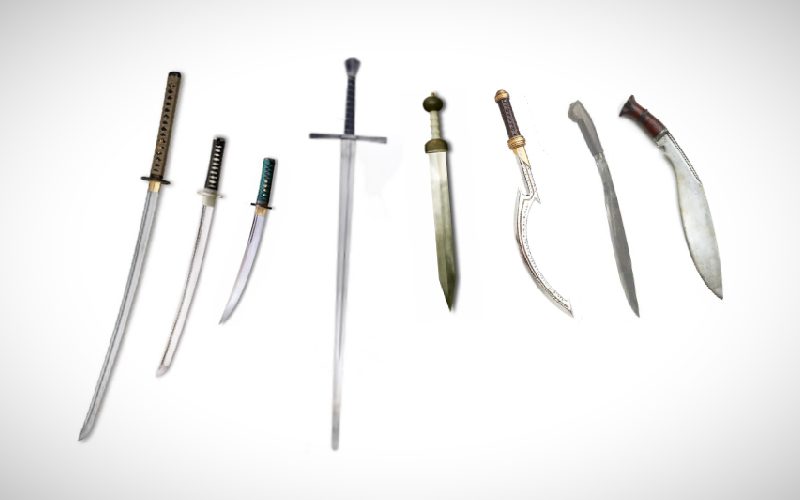
What’s in this article?
Tactical swords are functional blades that are perfect for combat. They come in many different shapes and sizes and originate from all over the globe. In this article, we will dive into the origins, specifications, advantages and, in some cases, disadvantages of a wide range of tactical swords available in the modern day marketplace with the hope of helping you to make your decision on the next blade you add to your wishlist!
The understanding of the term “tactical” varies slightly within the
Tactical Swords from Around the World
So called tactical swords originate from a wide range of locations across the world and a multitude of time periods throughout history. A large quantity of tactical swords available to the modern-day collector are forms of Japanese swords, Samurai, and otherwise. There are also examples of European short swords, Egyptian, and Filipino military blades.
The range of these swords could be overwhelming, so let’s break them down in order to understand them:
Katana (Japanese)
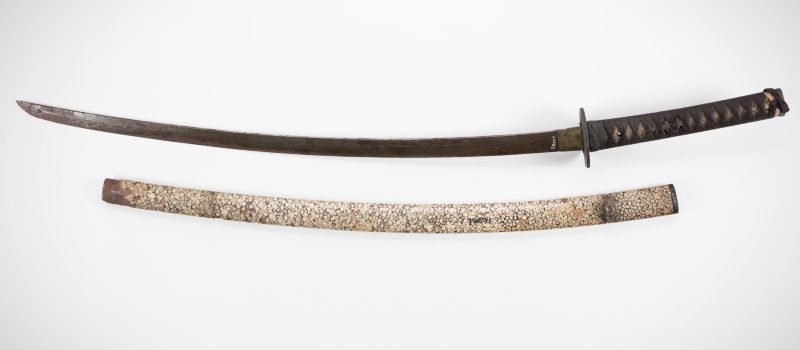
The Katana is a legendary Japanese
The Katana was developed from the older straight bladed Tachi
Approximately 60 cm long, the traditional Katana
Advantages:
- A Lethal Weapon: One of the most tactical elements of the Katana
sword was its revolutionary design. The new curved blade meant a Samurai master could position the weapon in his belt with the curved edge facing up. In doing so a deadlysword stroke could be made in one smooth action, from draw to blow.
- High Quality Material: The renowned high carbon steel or damascus steel used to forge the Samurai
sword is famous for its powerful qualities. The complex process used by master swordsmiths led to a blade that was razor sharp, dynamic, and absorbed impact with radical resilience.
- Legendary Status: The status symbol that is the Katana Samurai
sword is undeniable. Either for display or for reenactment, this blade would make anyone’s collection shine.
Disadvantages:
- Quality Control Needed: When you are looking for a Katana, consider quality control as the forgery process used to make the original swords is still somewhat of a mystery to the modern day swordsmith, so think about checking reviews and existing examples of their work before you part with your money.
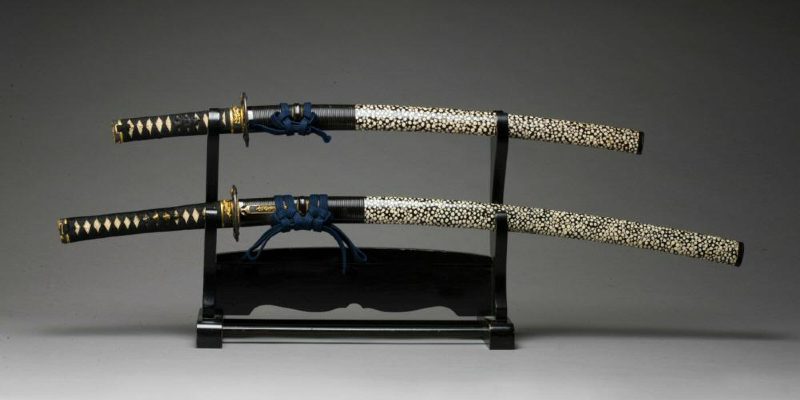
Wakizashi (Japanese)
The Wakizashi short
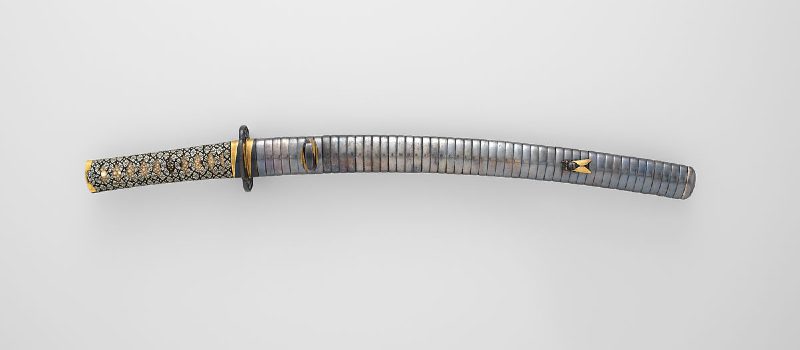
Like all Japanese edged blades, the process of its forging was also considered an artform. Known as a daisho, a Samurai would own a set of both a Katana and a Wakizashi. This pairing would be made with the same high carbon steel as well as matching fittings and mounts such as the ornate hand guards, known as the tsuba.
The tactical use for the Wakizashi was in the height of battle. If a Samurai was unable to end his enemy with his Katana, the Wakizashi could be drawn and used to finish off the opponent.
Advantages:
- A Short Blade: The Wakizashi’s blade length gives its wearer an advantage when it comes to drawing it quickly and easily from its scabbard when needed, often at the last minute.
- Ease of Use: It can be easily pulled out with one hand and its design makes it ideal for thrusting and stabbing.
- High Quality Material: Like the Katana, the high carbon steel blade renders the Wakizashi strong, swift, and durable.
- Authentic Accuracy: Owning a personalized Katana and Wakizashi daisho sets you up for the ultimate Samurai reenactment whilst also displaying historical accuracy in your collection.
Disadvantages:
- Costly: Following on from the last advantage, you might want to bear in mind that purchasing a traditional daisho, although desirable, will double the dent in your bank account.
- Backup Weapon: As the Wakizashi is known as the backup weapon used for close combat fighting, you might not want to take it into battle by itself.
Tanto (Japanese)
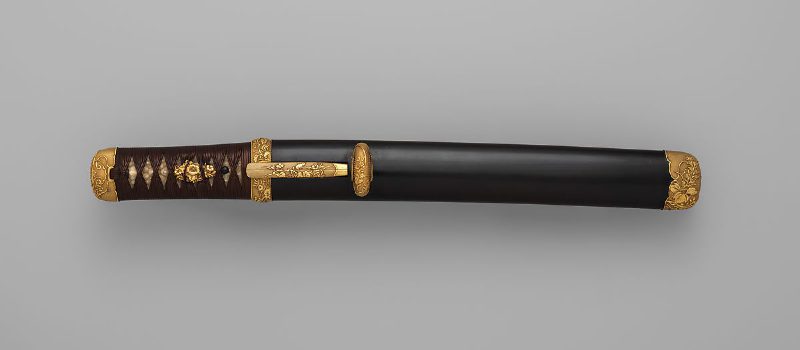
The Tanto blade is the last tactical Japanese weapon we will look at. Even shorter than the Wsakizashi, the Tanto is less than 30cm in length and is more commonly known as a dagger or knife rather than a
It is another weapon used by the Samurai class and would also be worn on the belt. However, history suggests that the Tanto blade and the Wakizashi short
Advantages:
- Decorative: As well as being a sharp-blade knife that could be taken into battle and used in the most deadly and efficient way, the Tanto was also worn as personal ornamentation, almost like jewelry. If you want an elaborate piece of costume, the Tanto functions as both a weapon and an ornament.
- High Quality Material: Like most other Samurai Swords, the Tanto would be full tang and made with the same unrivaled steel of the Katana and Wakizashi.
Disadvantages:
- Costly: Unfortunately, acquiring a full set of Katana, Wakizashi and Tanto will most likely cost you a pretty penny.
- Backup Weapon: The Tanto isn’t a blade you would want to head into battle with on its own. However, it could prove invaluable in a crucial moment, much like the Wakizashi.
Longswords (Medieval)
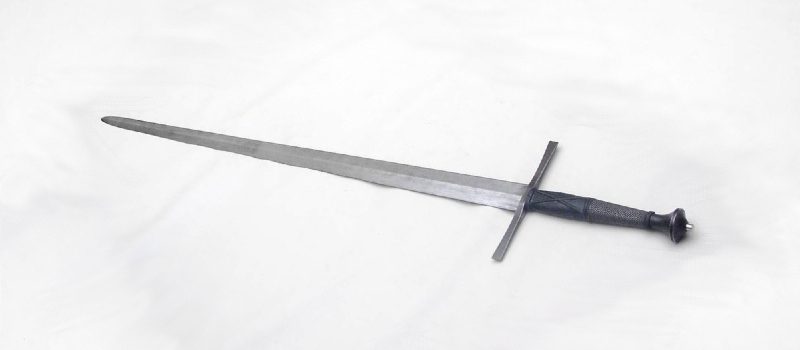
The next tactical blade is a medieval
The blade of a Longsword could range from 83 to 101 cm whilst the hilt would be 17-25cm. The overall length of the Longsword was controlled by whether it could be easily drawn from its scabbard.
Developed out of the broadsword, the Longsword had a double-edged blade with a cruciform hilt. The design adapted and changed from being effective in cutting and thrusting (working well in offense on armor) to becoming lighter, but less effective in cutting. This led to its decline in popularity on the battlefield and moved its position to one in sporting and dueling events.
Advantages:
- Functional: The Longsword should be short enough to be worn on a belt and drawn from your hip.
- An Emblem of the Middle Ages: Carried by Crusaders, the Longsword is an icon of medieval swords and weaponry.
- A Wide Range to Choose From: Since the term Longsword doesn’t identify an exact type of
sword , this leaves you open to buying the most tactical modernsword that fits its general specifications.
- Functional: As it can be held in one hand and worn in its scabbard on a belt, the Longsword can be carried whilst on horseback.
Disadvantages:
- Lower Quality Materials: Unlike the Japanese Samurai swords, medieval swordsmiths took a longer time to learn the process of forging high carbon blades, so the quality never quite matched that of Japanese metallurgy.
Gladius (Roman)
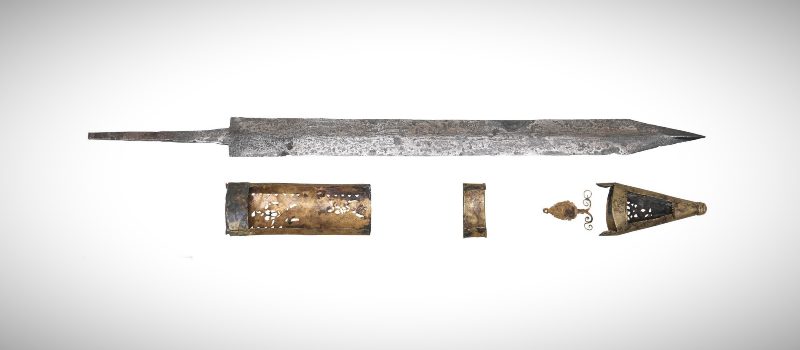
The “Gladius Hispaniensis” is the long name for this Roman short
Adapted from the original Spanish
Being a staple of Roman in-hand weaponry for an extended period of time, the Gladius’s design adapted and changed throughout its reign. We can generally think of it as a long pointed blade, starting out at around 60-69cm in length and gradually getting smaller to reach about 40-50cm and 5-6cm wide. The Gladius retained a large pommel at the end of its hilt, acting as a perfect counterbalance and enhancing its forces of attack.
Advantages:
- Good for Combat Fighting: The greatest advantage of the Gladius is its tactical functionality in offensive close combat fighting. The short
sword was the perfect thrusting blade, with certain styles being effective in cutting as well.
- Multiple Uses: The Gladius served the Roman soldier on the battlefield, but also the Gladiator in the ring, making it worthy of any opponent.
- Perfect Architecture: Its size and design makes it the ideal size to carry comfortably on your belt or battle dress.
Disadvantages:
- Lacks Defense: Due to its short length, the Gladius is unlikely to offer as much defense/protection as a Katana or Longsword.
- Lower Quality Materials: Being such an early
sword , the metal that was used to forge the Gladius would not have been strong enough to withstand metal on metal. It was purely for stabbing soft flesh. This would have meant a shield was also crucial. To replicate this in modern reenactments you may want to carry a shield too.
When purchasing any modern replica of an ancient sword you are likely to have a blade that is much sharper than it would have been, say, in Ancient Rome! A kydex sheath will protect you and your blade.
Khopesh (Egyptian)
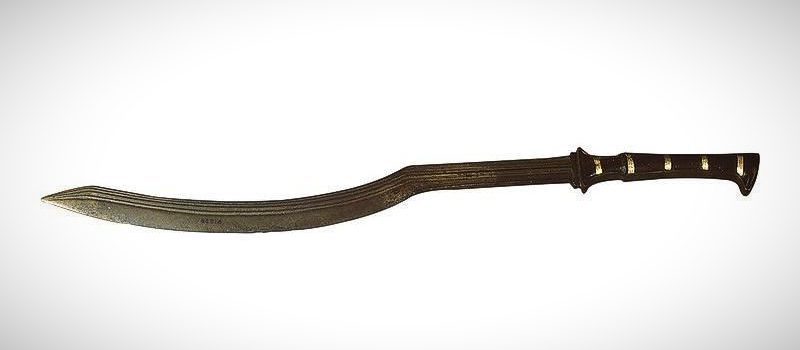
The Khopesh (also pronounced khepesh) is an iconic sickle-shaped
This
The Khopesh was usually 50-60cm in overall length, but it isn’t unusual to find a modern replica at an extended length. The traditional swords were made in bronze, and due to the material being weaker than other metals, the Khopesh was generally cast in one piece.
Depicted in Ancient Egyptian imagery throughout history, the Khopesh is frequently seen in the hands of Gods and Kings. This indicates its royal and godly status as a weapon that was revered above others.
Advantages:
- Lightweight and Dynamic: The Khopesh was considered lightweight by ancient standards and if buying a modern replica, you can expect an equally dynamic
sword .
- Multi-Functional: The design of the blade was/is usually thick enough to be used as a club as well. Multi-functional, if slightly gruesome.
- Stands Out from the Crowd: Being of such unique shape and origin, the Khopesh is a perfect display piece.
- A Unique Fighting Technique: The Khopesh is designed to both slash its enemies and hook their shields. This means the Khopesh offers the opportunity to handle a
sword that requires a very different approach.
Disadvantages:
- Rare: Due to the individuality of this
sword it could prove difficult to find a worthy replica.
- Difficult to Master: Although the
sword is exciting in its functions, it may be a steep learning curve to master them.
Ginunting (Filipino)
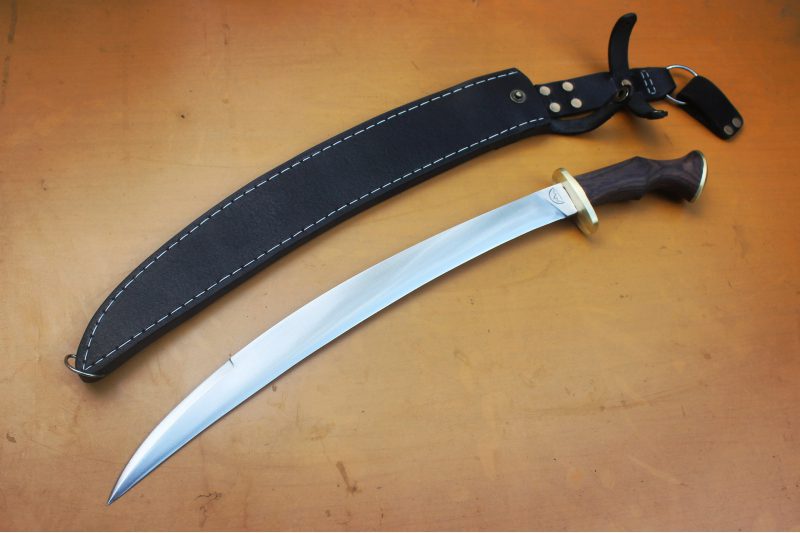
If you are looking for a tactically utilitarian and equally niche blade, then the national
Ranging from approximately 38cm to around 60cm, the tactical Ginunting’s blade is curved downward, acting like a boomerang, as it allows a deftly fast delivery and equally fast return. The
Advantages:
- Tactical Camouflage: You can attain a tactical Ginunting with a dark, parkerized finish which makes them difficult to see and deadly in the dark.
- Multi-Functional: The Ginunting can be used to sweep through jungle undergrowth, chop wood for fires, and serve swift and fatal blows in action.
- Made for A Round Survival: The all-rounder qualities of this
sword appeals to the ‘apoc’ (apocalypse survival) community, if that is your interest.
- Used Today: As a weapon that is still favored in the Philippines it can be seen to be a modern age
sword .
Disadvantages:
- Difficult to Master: The unique design of this
sword comes with an advisory warning to properly learn how to handle the Ginunting specifically.
Kukri (Nepalese)
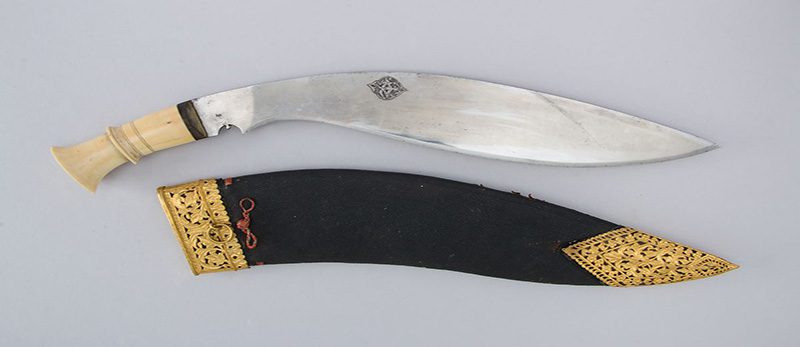
Much like the Ginunting, the Kukri is a form of machete that is both a tactical weapon and a multipurpose tool. This particular blade is the national weapon of Nepal as well as a commonly used utility knife for the Nepalese people.
Believed to have been used since 7 BC, the Kukri is an iconic emblem of the Ghurkas and can be held responsible for their fearsome reputation. So much so that the British used it as a double-edged form of propaganda to strike fear into the hearts of their enemies, such as in the battles in the Falklands.
The Kukri is made from high grade tempered steel. It is razor sharp, with a unique slight curve to the blade while the handles are made from either animal horn, hardwood or metal. The design of the Kukri includes notches in the blade near the handle, which holds the gruesome purpose of preventing your opponent’s blood from dripping onto the hilt and making it difficult to grip in the midst of battle.
Advantages:
- Multi-Functional: As mentioned, they can be used for everyday utility functions as well as a deadly weapon in combat.
- Durable: Their design and make up have withstood the test of time, making their strength and durability impossible to argue with given the Kukri’s incredibly early origins.
- Utility Uses: There is the potential to use them as a hunting knife in its modern form.
- Stands out from the Crowd: They are another lesser known blade which demonstrates a respect for a unique approach to in-hand combat, as well as an important historical piece.
Disadvantages:
- Greatly Feared: The Kukri holds a fearful reputation and, for some time, carried the myth that if it be drawn from its scabbard, blood must be shed. (This is of course only a myth, and not to be taken seriously)
- Too Large for Everyday Use: Despite its functions as a weapon and a tool, the size of the Kukri does not allow it to act as a pocket knife. Any handler should be careful and responsible when using a Kukri.
- Hard to find an Authentic Model: Although a buyer may be able to find a modern model of this
sword , they are still in use in Nepal today and it would be a shame to not have the real thing.

Conclusion
The differing characteristics of these tactical swords really brings home the great variations in weaponry produced around the world and throughout history. Depending on the desired purpose of the




